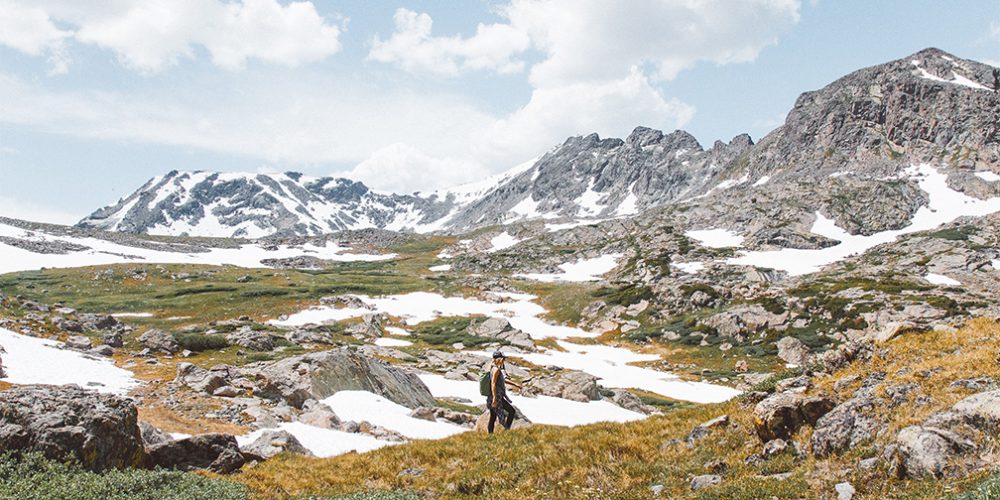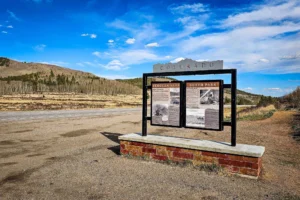Photo by Holly Mandarich
Park County, Colorado is a beautiful area with access to amazing scenery, wildlife viewing, and so many more opportunities to truly experience the wild here in Colorado. That’s why it’s so important to be cautious when you come to experience Park County or any area in Colorado for that matter! We want you to stay safe, healthy and have the most fun on your trip here, so here are a few tips and tricks and overall things to keep in mind when visiting Park County, Colorado!
Current COVID19 Tips
1. Bring Essentials: Colorado is known for its interesting weather which can change suddenly and has the potential to be devastating. Be sure to bring your layers, especially when hiking or going outdoors.
A good set of items to bring includes:
- Hat
- Sunglasses
- Sunscreen and SPF Lip Balm
- Insect Repellant
- a long sleeve top or baselayer
- wool or thick fleece pullover or jacket
- a thicker jacket, waterproof preferable
If you plan on adventuring be sure to bring:
- lots of water and extra food
- pocket knife
- first aid kit
- waterproof matches
- headlamp
- flashlight
- compass
- any maps necessary
- signaling tools like a mirror and whistle in case you ever get lost
2. Adjusting to a New Environment
There a few special things to take in mind when you come to visit Park County, Colorado:
- Altitude Sickness & Tiredness: In Park County, Colorado expect to be in high elevations with an average of 9,000 feet! Due to this altitude sickness, which occurs above 5,000 feet, is a real possibility. Keep an eye out for common symptoms of high altitude sickness which can include dizziness, nausea, fatigue, and confusion. You might be eager to start hiking as soon as you reach Colorado or higher altitudes, but it is highly recommended to take it easy a couple of days and drink lots of water while you acclimatize yourself. Once you venture out on your first hike be aware of how you feel. At the first signs of altitude symptoms descend to lower altitude immediately and seek medical attention if conditions do not improve.
- New Terrain and Environment: Before you venture out to hike or explore the county, be sure to always check your local conditions and make sure you know how to get back to your original location at all times. When hiking be sure to always take caution. Make sure to stay on trails, avoid stepping on unsecured items like logs and loose dirt. Take precaution and do not create a situation where you could unnecessarily be injured causing rescue teams to have to locate and evacuate you in difficult terrain. Don’t run down slopes and if you fall, roll with it while protecting your head.
- Lightning: Don’t underestimate this threat! Lightening is very frequent in Colorado. If your hair stands on end, a strike could be imminent! If you go out hiking, be sure to pay attention to the weather and start early when you can. When lightning is possible, be sure to avoid trees, mountaintops, ridgelines, boulder fields and rocks. Move to a low area and stay away from others. Make sure to remove metal objects you have on you like keys and jewelry, and turn off/remove electronics. The best position to be in during a lightning storm is to crouch down with your legs together. Do not lie flat on the ground as this can cause a current to travel through vital organs.
- Hypothermia: Hypothermia can happen at any time of year in Colorado! Be sure to travel with non-cotton clothing layers, with a waterproof jacket. Symptoms include confusion, loss of coordination, pale skin, painful shivering, slurred speech, shock, and weakness. If you suspect hypothermia your ultimate goal is to get warm. If possible in emergencies placing the victim in a sleeping bag surrounded by two body heat donors can be very effective as skin-to-skin contact can rapidly warm someone back up.
- Keeping it Clean in the Backcountry: In order to prevent disease spread in the backcountry, please be sure to dispose of body waste responsibly. If possible, feces should be buried 6-8 inches underground, and at least 100 feet away from streams and water sources.
3. Water Concerns: It is always important to stay hydrated in Park County, Colorado! Although water sources in the wild may taste and look pure, it could carry Giardiasis, which can be contracted from unclean and untreated water. Although not life threatening, it can lead to unpleasant symptoms like abdominal cramps and diarrhea. Your best bet is to treat any water source you get by boiling it or using a portable water filter. If you are taking a hike, be sure to bring water with you in a reusable container!
4. Nature and Animals:
- Ticks: Lyme disease is an infection carried by deer ticks and can be transmitted to humans and animals. Ticks wait on grasses and brush in order to attach to their host. Ticks will then typically hop on your feet and legs and then crawl upwards on your body. Use insect repellent and stay on the trail and avoid walking through long grass. Check your body when you can. Wearing long pants and shirts can help. Tucking your pant legs into your socks or wearing gaiters is also recommended.
- Snakes: Rattlesnakes may be found up to 8,000 feet elevation and sometimes higher. Be especially careful crossing rocky areas or stepping over downed trees. If you come across a rattlesnake, stand well out of striking range and wait for it to move off the trail. If you happen to get a rattlesnake bite, walk out and get to a hospital as soon as possible for medical treatment. Do not cut the bite with a knife and attempt to suck out the poison as this makes the situation worse.
- Rodents: Avoid setting-up camp in an obvious rodent community. In some cases their fleas carry an infectious disease called plague and can be transmitted to humans. They may also carry Hantavirus which can be transmitted through urine, saliva, and droppings. A person may be exposed by breathing dust after cleaning rodent droppings or disturbing nests.
- Bears: Black bears are generally shy and will avoid people. If you should encounter a black bear on the trail, back away slowly while facing the bear. If the bear shows signs of aggression, make yourself look big (wave arms, gather your family together) and shout. If the bear attacks, fight back, and report all aggressive bear activity. To avoid bear encounters, always store your food and other scented items properly.
- Horses: When you encounter travelers who have horses or pack stock, move off the trail on the downhill side and let them pass. Horses are easily frightened and have the right-of- way on trails.
- Poison Oak: Poison oak, which produces an unpleasant, itching, blistering rash, grows up to about 5,000 feet elevation. The plant can grow in bush or vine form, with leaves either of green or red from 1⁄2” to 4” in size, resembling an oak leaf but in clusters of three. If you do come in contact with poison oak, wash the site with lots of fresh, cool water, and avoid spreading the oil that causes the rash. Carry an appropriate ointment for treating the rash in your first aid kit.
5. Special Situations:
- Emergencies: If you happen to get lost, stay where you are! Any time you venture out you should take a whistle, small mirror, and or compass for any emergencies. Signals of 3 reflect distress to emergency crews and others. Remember that cell phone service is not always available if you’d like, satellite phones can be used as a backup but can also face complications. You may have to try to find open space to make a connection.
- Campfires: Campfires are allowed certain times of the year in developed campgrounds, picnic areas, and yellow-post sites. When building a campfire, use the following guidelines: If there is a fire ring in place, use it rather than building a new one. Build your campfire only in calm weather and keep the fire small. Select a level spot away from overhanging trees, bushes or dry grass. Keep away from the base of steep hills (fire travels uphill fast) and clear a 10-foot circle down to bare earth. Dig a small hole and use this to cover the hole once the fire is dead out. Use only a small amount of dead and down wood. Put your fire out at least 1⁄2 hour before you start to break camp. Let the fire die down, then pour water over the wood and ashes and stir. After the 1⁄2 hour is up feel the embers with the back of your hand. If you feel any warmth, repeat the drowning and stirring method.
- Hunting Season: We recommend that you don’t hike alone during hunting season and that you stay on established trails. All hikers, as well their dogs, should wear at least one piece of florescent orange clothing during hunting season.



